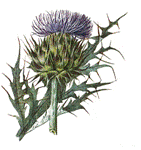Papers in the Biological Sciences

Svata M. Louda Publications
Document Type
Article
Date of this Version
2006
Abstract
Studies of biogeographic variation in species abundances are fundamental to understanding and predicting the impacts of invasive exotic species. We quantified the abundance of the introduced and now invasive biocontrol weevil, Rhinocyllus conicus, on a newly adopted native host plant, Cirsium canescens (Platte thistle), across the plant’s distributional range. We used regression and structural equation analyses to examine variation in weevil abundance at 92–108 sites over three years in relation to variation in abiotic and biotic parameters hypothesized to be important in insect or plant dynamics and distribution. We found that R. conicus now occurs throughout the majority of the range of C. canescens, even in the center of the native plant’s distribution where its coevolved, targeted weed host (Carduus nutans, musk thistle) is absent. In fact, weevil densities were greater in the center of the native plant’s distribution in the Sand Hills formation than in peripheral sand patches closer to areas where the targeted exotic thistle is common. None of the macroclimatic variables examined were consistent predictors of the large-scale variation in weevil abundance on C. canescens. In addition to biogeographic position, the only other consistent predictor of weevil densities across sites was the number of flower heads per C. canescens plant. These results exclude the ‘‘spillover’’ hypothesis to explain nontarget feeding on this newly adopted native host species. Instead, the results are consistent with the alternative hypothesis that exotic weevil abundance on C. canescens is related to the local availability of native floral resources. Because C. canescens densities have declined with increases in R. conicus at sites central in the plant’s distribution, these results suggest that isolated, peripheral populations of C. canescens are likely to be critical for persistence of Platte thistle. More generally, this study suggests that the persistence of a native species that is impacted by an exotic natural enemy may require preservation of populations in habitats outside the optimal portion of the native species’ distribution.


Comments
Published in Ecological Applications 16:3 (2006), pp. 877–890. Copyright 2006 by the Ecological Society of America. Used by permission.